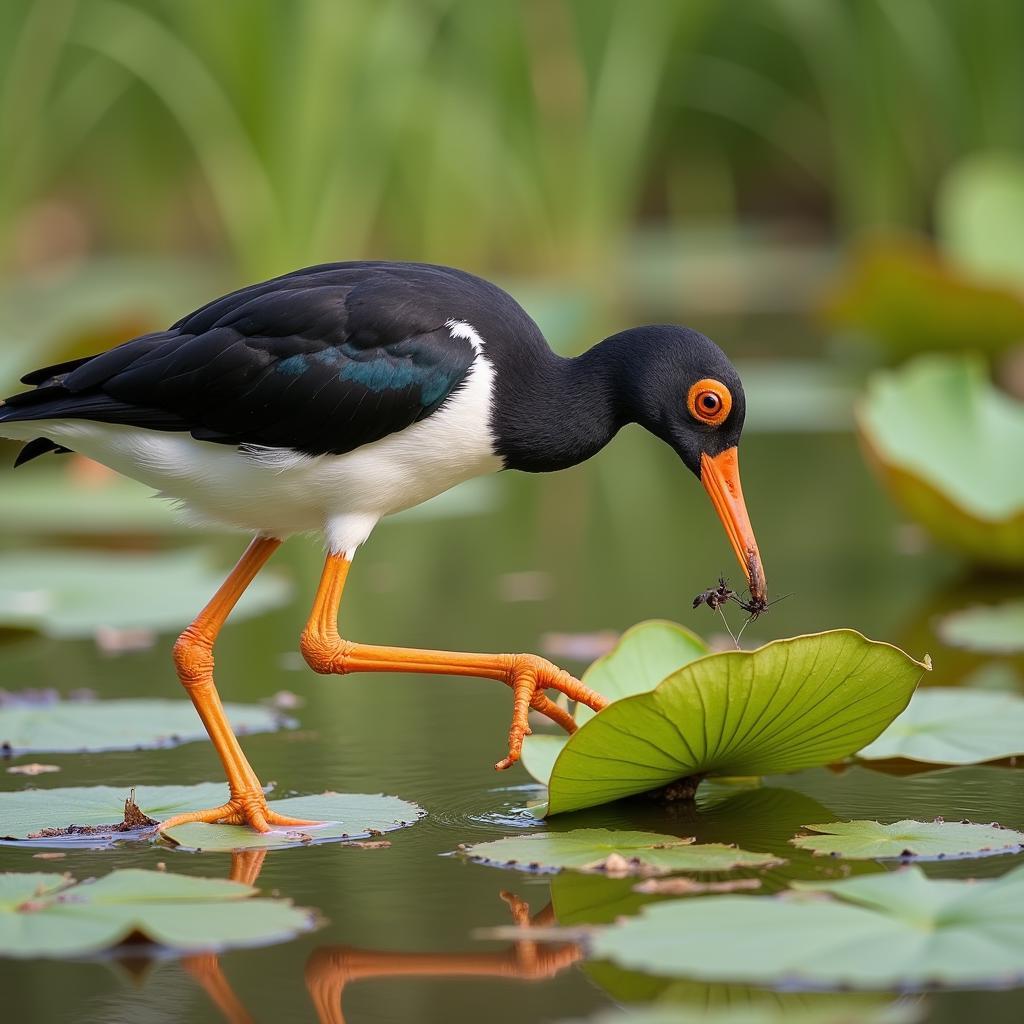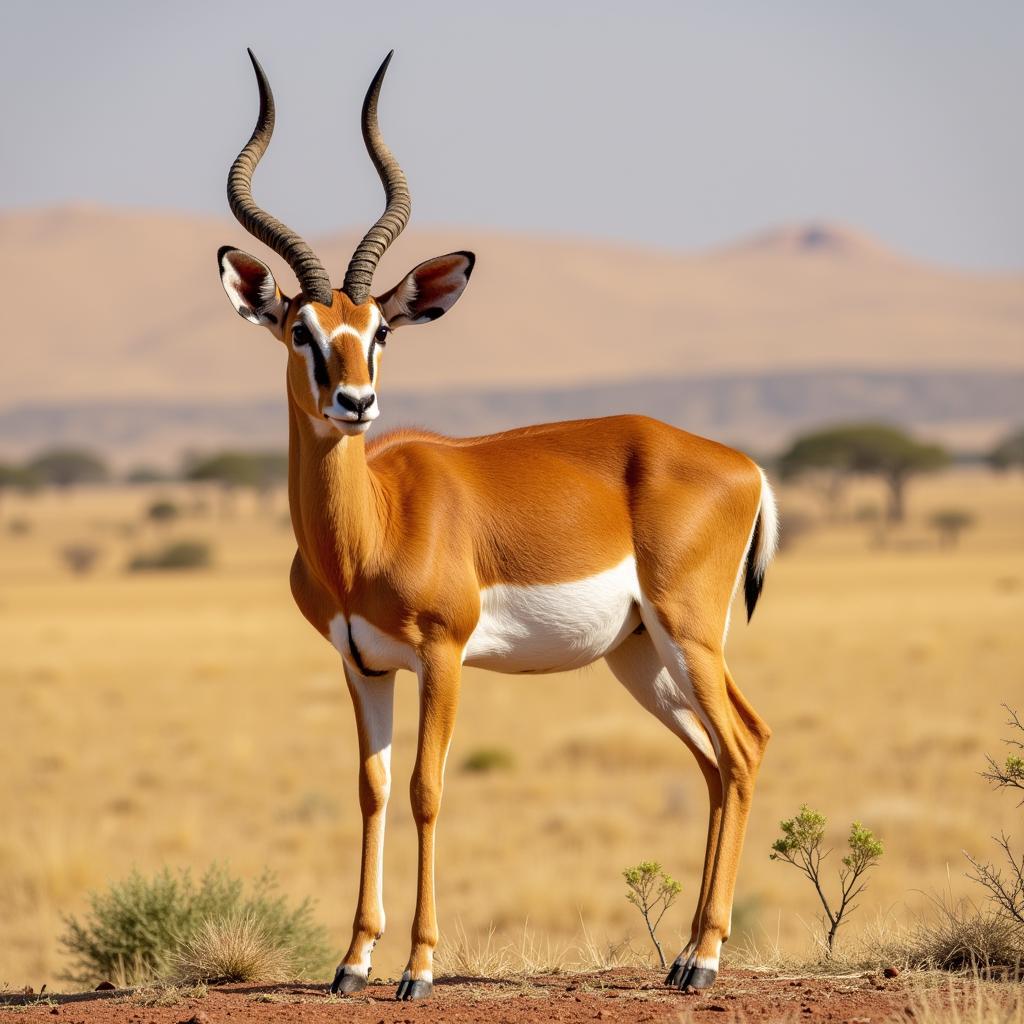The African Jacana: A Water-Walking Wonder
The African Jacana, a striking and unique bird species, graces the wetlands of sub-Saharan Africa with its elegant presence. Known for its remarkable ability to walk on water, this bird, with its vibrant plumage and distinctive features, captivates both bird enthusiasts and casual observers alike.
Appearance and Adaptations: Nature’s Graceful Design
The African Jacana cuts a striking figure with its chestnut back and wings contrasting beautifully with its white underparts and black head and neck. Adding to its allure is a bright yellow beak that extends into a distinctive red facial shield. This shield isn’t just for show; it plays a crucial role in attracting mates during courtship displays.
Perhaps the most fascinating feature of the African Jacana is its remarkably long toes. These elongated toes, spread wide apart, distribute the bird’s weight perfectly, enabling it to walk effortlessly on floating vegetation. This adaptation has earned them the nickname “lily trotters” or “Jesus birds,” as they appear to walk on water.
Habitat and Distribution: Kings and Queens of the Wetlands
True to their nickname, African Jacanas are perfectly at home in shallow, freshwater wetlands. Swamps, marshes, and the edges of lakes and rivers are their preferred haunts. Their distribution spans across sub-Saharan Africa, wherever suitable wetland habitats exist.
Diet and Feeding: Opportunistic Hunters of the Water’s Edge
The African Jacana is an opportunistic feeder, its diet primarily consisting of insects and other small invertebrates found in its wetland habitat. Their long toes come in handy again, allowing them to navigate floating vegetation with ease as they forage for food. Using their sharp beaks, they skillfully pluck insects from beneath lily pads or snatch them from the water’s surface.
 African Jacana Feeding Habits
African Jacana Feeding Habits
Social Behavior and Breeding: Where the Females Rule
In the world of African Jacanas, the females hold the reins, exhibiting polyandrous behavior. This means a single female mates with multiple males, a unique characteristic in the avian world. The males, smaller in size than the females, take on the primary responsibility of nest building and chick-rearing.
The female lays her eggs, usually a clutch of four, in a floating nest constructed by the male from aquatic vegetation. The male then incubates the eggs and cares for the chicks once they hatch, while the female moves on to mate with other males.
Conservation Status: Facing Threats with Resilience
The African Jacana is currently listed as a species of Least Concern by the International Union for Conservation of Nature (IUCN). However, like many wetland-dependent species, they face increasing threats due to habitat loss and degradation. Human activities such as drainage of wetlands for agriculture and urbanization pose significant challenges to their survival.
The African Jacana: A Testament to Nature’s Ingenuity
The African Jacana, with its striking appearance, unique adaptations, and fascinating social behavior, stands out as a testament to the wonders of the natural world. Observing these graceful birds gliding across lily pads, their vibrant colors reflecting in the water, is a truly captivating experience.
By understanding the threats they face and advocating for the conservation of their precious wetland habitats, we can help ensure that future generations continue to marvel at the water-walking wonder that is the African Jacana.
FAQs about African Jacana Birds
Why can African Jacanas walk on water?
Their exceptionally long toes distribute their weight over a larger surface area, allowing them to walk on floating vegetation without sinking.
Where do African Jacanas build their nests?
They build floating nests on water, anchored to emergent vegetation, using reeds, grasses, and other plant material.
What is unusual about the breeding behavior of African Jacanas?
They practice polyandry, where females mate with multiple males, and the males are responsible for nest building and chick-rearing.
What do African Jacanas eat?
Their diet primarily consists of insects, small fish, snails, and other invertebrates found in their wetland habitat.
Are African Jacanas endangered?
They are currently listed as a species of Least Concern but face threats from habitat loss and degradation.
Explore More About African Wildlife
Interested in learning more about the fascinating creatures that inhabit Africa? Delve deeper into the continent’s rich biodiversity with these articles:
- African Jacana Afrikaans
- African Jacana Nest Pictures
- African Bird Species
- African Jacana Wikipedia
- African Animals by Region
Discover the incredible diversity of Africa’s wildlife and gain a deeper appreciation for the continent’s natural wonders. Contact us at +255768904061, email us at kaka.mag@gmail.com, or visit our office located in Mbarali DC Mawindi, Kangaga, Tanzania for any inquiries. Our dedicated customer service team is available 24/7 to assist you.


